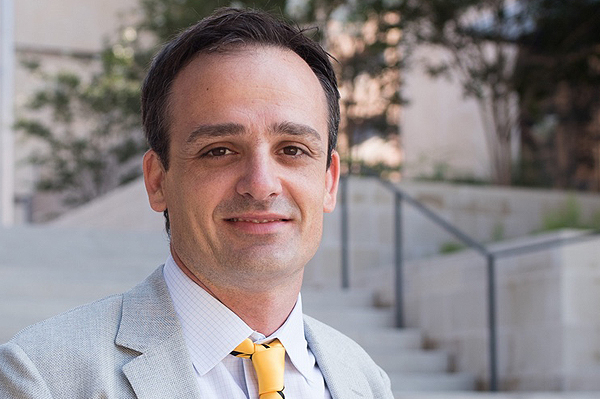Past Event: Babuška Forum
Renato Zanetti, Assistant Professor, Aerospace Engineering and Engineering Mechanics, and Oden Institute, UT Austin
10 – 11AM
Friday Jan 22, 2021
Zoom Meeting
An estimator is a function that, given a measurement as an input, returns as an output an estimate of the state of the system. In linear estimators, such as the Kalman Filter (KF), the measurement appears linearly, i.e. it is scaled by a deterministic gain. The Kalman filter is a model-based estimator; its functional form is determined by a physical model of the measurement and the dynamics. The advantage of a model-based design is the reliance on known physical principles to predict outcomes in corners of the state-space that might seem very unlikely to occur a priori. The disadvantage of model-based estimation is that any model mismatch will bias our estimate towards “what we think” should be happening rather than “what actually” happens.
An alternative approach to model-based estimation and prediction are data-driven methodologies, where the functional form of the estimator is determined from data rather than models. The most classic data-driven methodology is regression using polynomial functions or splines. In regression, for example linear regression, the relation between a set of measurements and their associated "true" states is assumed linear and the coefficients of linearity (slope and intercept) are determined to minimize the square of the error. Once the slope and intercept are calculated, we can deploy the regression function as an estimator: feed it a measurement whose associated true state we don't know, and extract an estimate of it.
In the context of nonlinear regression, the regression coefficients cannot be always calculated in closed form, but numerical recursive methods of least-squares minimization are employed. These methods include Gradient Descent, Gauss-Newton, and Levenberg-Marquart. From the point of view of Statistical Learning, supervised Machine Learning (ML), is a type of nonparametric regression in which the functional form of the estimator is a cascading combination of nonlinear activation functions. Once we have established the functional form of the estimator, we use data and a nonlinear optimizer to calculate the optimal parameters of the estimator. ML techniques often use Gradient Descent or Stochastic Gradient Descent as an optimizer and rely strongly on statistical tools such as cross-validation and shrinkage to avoid over-fitting the training data. The advantage of data-driven methodologies such as supervised machine learning is that it does not bias the solution towards an assumed model of the truth; while the disadvantage is that only data close to that seen during training is likely to produce meaningful estimates, while unseen cases have the potential of failing in spectacular fashion. This fact typically implies the need of a large and rich training set and a comprehensive training session.
This talk will discuss model-based and data-driven approaches and describe our current research to merge the two.
Renato Zanetti joined the Department or Aerospace Engineering and Engineering Mechanics of The University of Texas as an Assistant Professor in January 2017. Prior to joining UT, Renato worked for almost a decade in the private and government sectors.
From 2007 to 2013 Renato was an engineer at the Charles Stark Draper Laboratory. During this time he worked on every current and planned manned NASA vehicle: the International Space Station (ISS), the Space Shuttle, and Orion. He has been heavily involved in designing Orion navigation since the start of his professional career. Renato was the lead relative navigation designer for Orbital Sciences Cygnus vehicle, which completed several successful cargo resupply missions to the ISS. In 2013 he served as the lead of the Vehicles Dynamics and Control group at Draper. In this role he provided overall management and direction to ten engineers and several student interns/fellows.
From 2013 to 2017 Renato was an engineer at the NASA Johnson Space Center (JSC). During this time he served as one of the lead designers of the absolute navigation filter for Orion EFT1, which successfully flew in December 2014. He was responsible for the design, coding, and testing of two navigation Computer Software Units (CSUs). During the EFT1 flight, he monitored the navigation telemetry from the engineering support room in Denver (Raptor). Prior to departing from NASA, Renato delivered the design and code of three CSUs for Orion’s next flight: Exploration Mission 1.
Renato is a Fellow of the American Astronautical Society (AAS) and an Associate Fellow of the American Institute of Aeronautics and Astronautics (AIAA). He is the chair of the AIAA Astrodynamics Technical Committee and a former chair of the AAS Space-Flight Mechanics Technical Committee, which organizes two astrodynamics technical conferences every year. Renato and the Orion GN&C group received the prestigious NASA Software of the year award in 2015. He is also the recipient of a NASA Technical Excellence Award for outstanding achievement in Orion navigation design, two NASA On the Spot awards, and several Team and Group Achievements Awards.
